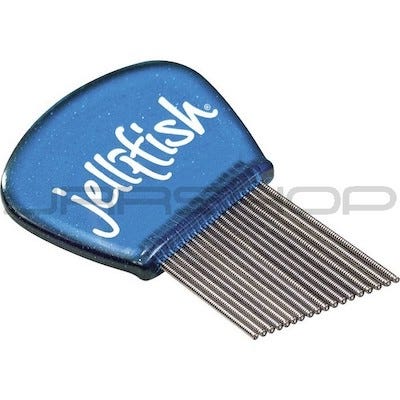Adventures in Insert Molding, from Catheters to Guitar Picks
Aberdeen Technologies’ Bill Walter and John Schmitz have spent their decades-long careers solving medical molding challenges. Their expertise is in greater demand than ever — the company’s biggest customer is a major supplier of ventilator components.
June 25, 2020

With apologies to Farmer’s Insurance, Bill Walter and John Schmitz know a thing or two about insert molding because they’ve seen a thing or two. They have worked together for 48 cumulative years, first at Illinois Precision Corp. (IPC), where they cut their teeth on insert molding, and later at Aberdeen Technologies, founded by Schmitz and his father, John H. Schmitz, in 1994. Walter joined the firm a few years later, renewing his professional bond with Schmitz that continues to this day.
Insert molding was a relatively new technology in the early 1970s, recalled Schmitz, and he soon deduced some applications in medical device manufacturing. That remains a focus at Aberdeen, where medtech molding accounts for approximately 70% of the business. But the die was cast initially in respect to Schmitz’s metier in 1983, when a division of the medical device company Baxter came to IPC to solicit help in developing one of the first insert molded multi-lumen catheters.
“Before insert molding came into fashion, medical device companies typically would mold a plastic piece — a hub or manifold — and then glue tubing or a needle into the hub,” Schmitz explained to PlasticsToday. This had some predictable drawbacks.
“First, it took time for the glue to fully cure, so racks upon racks of parts had to be left overnight under a light, taking up much space,” said Schmitz, adding that the process was very inefficient in the context of a “lean or just-in-time manufacturing environment.” It wasn’t great for the workers, either.
Sniffing glue on the job
“The people applying the glue were constantly inhaling fumes that caused discomfort, headaches, or even worse,” said Schmitz. Repeatability also was an issue. “The workers metered in the glue by hand or via a hand-directed semi-automatic feed, in some cases applying too much or too little glue, resulting either in glue spilling onto the device itself or a weak bond because too little glue was used. Insert molding was the perfect solution because the tubing or needle was placed into the mold and the exact amount of plastic was injected — it filled the cavity under pressure, so the consistency was perfect. The part was removed from the mold and immediately ready for the next operation, without any nuisance to the operator,” said Schmitz.
IPC began selling turnkey molding systems, which included mold tooling designed and supervised by Walter. Over time, IPC became a key supplier to many of the largest healthcare companies in the world, according to Schmitz.
In 1994, Schmitz left IPC and set up shop with his father at Aberdeen Technologies, a full-service supplier of insert/injection molding as well as a provider of mold tooling and prototype/design assistance. Walter hooked up with his old buddy a few years later, and they haven’t looked back since. He currently holds the title of Engineering Manager.
|
John Schmitz (right) founded Aberdeen Technologies with his father in 1994. A few years later, Bill Walter, with whom Schmitz had worked at another company, joined the firm. Image courtesy Aberdeen Technologies. |
A willingness to tackle difficult projects for medical device OEMs has helped the company to prosper over the years. Schmitz recalls “molding a seal around the neck of a glass bottle without crushing it” and molding “thin-gauge needles without damaging the delicate, sharp points” as particular challenges early in their careers.
Aberdeen has established a reputation for quality over the years, which Schmitz considers to be “the most important ingredient to a successful relationship with a supplier. Medical devices always demand the utmost in precision, compliance, and traceability.” He is proud of the fact that the company has never had a major non-compliance issue, which is saying something considering the technical demands of customers. “We have been called upon to mold some very small components over the years, and had to adapt equipment at times— a smaller screw and barrel, for example — as well as various innovations in mold tooling to be able to handle some of the parts.”
|
Aberdeen Technologies helped develop this unique guitar pick, called the Jellifish for obvious reasons. Image courtesy jrrshop.com. |
The company’s longstanding relationships with customers and its deeply rooted expertise have held it in good stead during the COVID-19 pandemic. “Our largest customer is a major supplier of ventilator components. Everything he molds is done on tooling we built, even going back to 1989.” The company currently has more business than it can handle, said Schmitz, “so he is ordering new molds (and having us repair old molds) like crazy.” Aberdeen even had to hire a part-time worker and ask its employees put in as much overtime as possible to meet demand. A good problem to have, especially in these times.
“Also, our largest molding customer makes gun sights, and we mold an important component for those,” said Schmitz. “What is the second most popular thing being sold these days after ventilators? Probably guns. I don’t mean to be insensitive, just telling the facts. Needless to say, we are quite busy on all fronts,” added Schmitz.
There’s one other milestone in Aberdeen Technology’s past that I would be remiss not to mention, and that comes from a musical space. “A guy walked into the office one day with his guitar and a half-dollar coin onto which he had welded about 20 short pieces of guitar string sticking out from the edge in a row,” recalled Schmitz. “He started strumming the guitar with this homemade ‘pick’ and it really sounded unique. He explained he wanted to invent and market this pick, so we assisted with the design and built a mold— the strings were placed in the mold and a pick shape was molded around them. The ‘Jellifish’ was born — the pick itself was made from a sparkly blue plastic and the strings dangling along the bottom resembled a jellyfish,” said Schmitz.
“If a customer wants to insert mold something — no matter how unlikely it may appear at first — we are up for the challenge,” noted Schmitz. And that runs the gamut from a multi-lumen catheter to a fishy looking guitar pick.
About the Author(s)
You May Also Like






